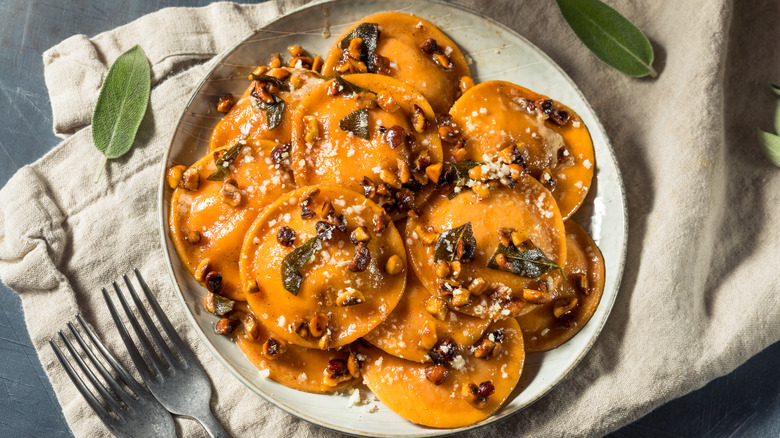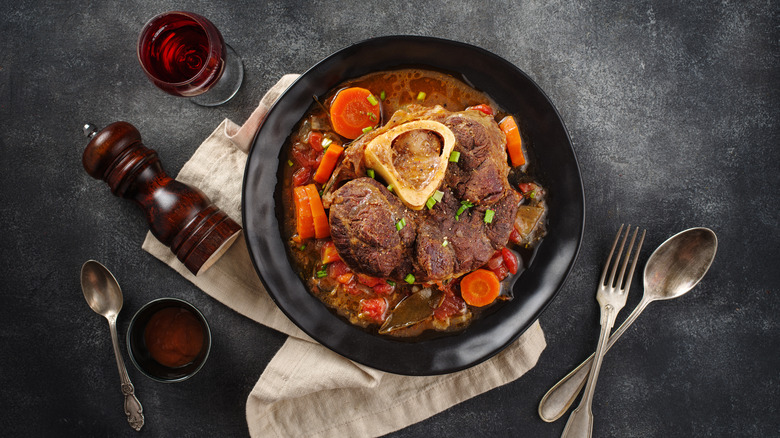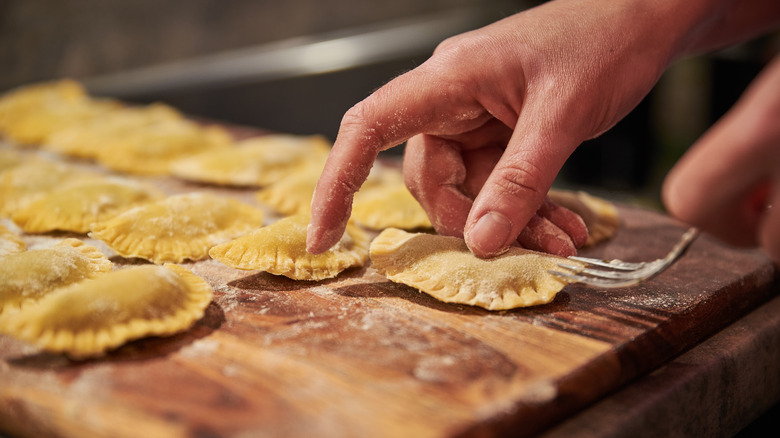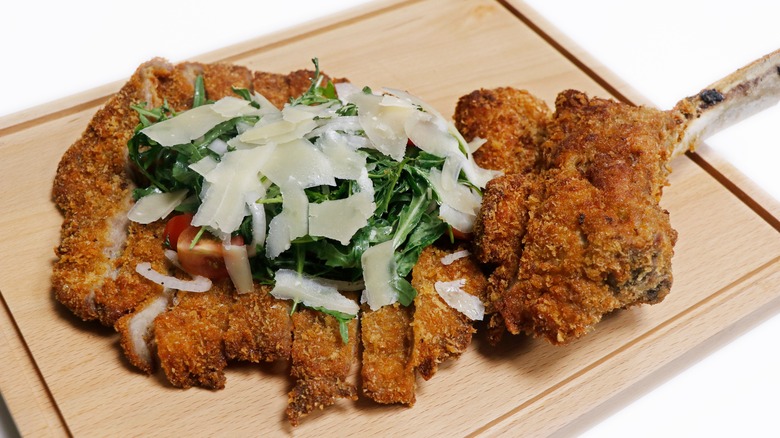The Time-Consuming Italian Dishes That Are Always Worth Ordering Out
When confronting an Italian restaurant menu with nothing but enticing options, it's easy to let indecision overtake you. Thankfully, there are some Italian dishes that are always worth ordering out, so you can take a systematic approach to the menu if you consider a simple factor: The most time-consuming options are often the most delicious.
Consider the elemental Italian ingredients and techniques that take time and care and patience to get right: Parmigiano Reggiano cheese, decades-old balsamic vinegar, aged prosciutto, or tender meat braised for hours on end. With that in mind, it makes sense that the food that takes the longest time to prepare can leave you in a state of delirious satisfaction, from dishes like osso bucco that take hours of braising to handmade pasta to quintessential veal specialties. You've probably perfected at least one simple pasta dish at home, so when you go out, treat yourself to something outside of your culinary comfort zone.
Leave the braising to the professionals
If your server utters the word "braised," know that the restaurant's kitchen crew has devoted an amount of time and attention to the dish that the average home cook might find unmanageable, so do yourself a favor and order this treat. Some braised Italian dishes you might encounter include brasato al barolo (beef braised in its namesake wine), spezzatino (a hearty beef stew with wine and vegetables), and stracotto (beef or veal roast braised in wine with tomatoes and herbs), but osso bucco stands out as a classic of Italian cookery.
This iconic veal dish (though it is sometimes made with pork, beef, or lamb) utilizes cross cuts of shanks that are seared, deglazed with wine, and then simmered in stock and aromatics and herbs. What makes this braise special can be found in the name: Osso bucco translates to the inelegant "bone hole" in English and refers to the marrow that lends the recipe its unmistakable richness.
Freshly made filled pasta is worth ordering out
Pasta is the cornerstone of Italian cuisine, but you'd be mistaken to think that a restaurant's house-made pasta resembles the stash of dried noodles in your pantry. The pasta made in restaurants typically comes in two forms: extruded and hand-rolled. While extruded pasta utilizes the humble and holy union of flour and water, it's the egg-based hand-rolled and filled pasta that's especially time-consuming and relies on the cook's deft hand and expertise.
Whether it's agnolotti, ravioli, tortelloni, or cappellacci, these labor-intensive filled pastas should not be overlooked. The egg and flour dough is mixed, kneaded into submission, and left to rest. The pasta filling also takes time and can include anything from braised beef to ricotta and whole egg yolk. Then the eggy dough is rolled to delicate thinness, the filling is applied, and the pasta is sealed around its contents and manipulated into its prescribed shape. At restaurants, hundreds of these parcels of dough and rich filling could be made daily. If a filled pasta is on the menu, you're almost obligated to order it and save yourself all that effort.
Veal is a luxury worth indulging in
There's a long list of Italian veal dishes, and because this prized meat isn't always readily available for home cooks, it's always worth ordering. Keep your eyes peeled for authentic specialties like vitello tonnato (veal in tuna sauce), veal marsala, veal scallopini, and veal piccata — many of which also require considerable time and effort to make correctly. These dishes are especially delicious because the ultra-tender veal is often contrasted with an element of crunch, or bathed in a flavorful sauce.
You might second-guess ordering veal, which isn't uncommon; in the past, an effective campaign to spotlight cruel husbandry practices rendered the meat unpalatable for even the most voracious carnivores. As a result, industry regulations and a drop in veal consumption necessitated change, and calf-rearing practices evolved into something far more compassionate. So when a veal dish pops up on an Italian restaurant menu, you don't need to sacrifice ethical eating in favor of flavor.




